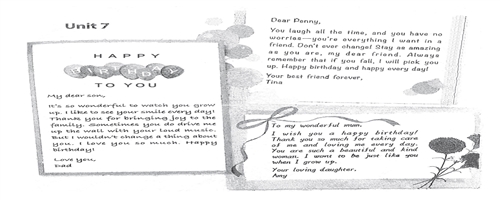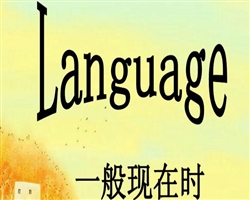Printing and Dyeing
印染
Printing and dyeing here refer to traditional folk handicraft of printing patterns or dyeing various fabrics. In actual use,however,the term“printing and dyeing" may mean the folk technology of printing or the dyeing of fibrous fabrics in the broad sense,whereas in the narrow sense,it means a specific printing and dyeing approach,namely,a method of printing colored patterns on cloth by applying wax on the part that is not to be colored with hard paper printing plate .In China,folk printing and dyeing have a long history with diversified approaches and techniques. Having both practical and aesthetic value,printing and dyeing vividly reflect the simple ,unaffected but profound cultural and artistic skills.
印染是指流行于民间的、在各类纤维织物上染色、印花的传统工艺。在具体应用中,印染又有广义和狭义之分。广义的印染,是对民间在纤维织物上染色、印花工艺的通称;狭义的印染,则是指一种具体的印染工艺方法,即采用防染技术、用花版型纸在纤维织物上印染出花纹图案的印染工艺。在我国,民间印染历史悠久,方法多样。它不仅具有实用价值,而且具有审美价值,真实地反映了一种朴实而深厚的文化和艺术积淀。
Prevalent now as a folk handicraft, China's printing and dyeing handiwork falls into different schools in terms of local styles,for example,brocade produced from southwest Shandong,printed blue cotton produced from west Hunan and printed fabrics made by Uigur,etc .From the perspective of techniques,the most representative of them are printing and dyeing,wax-dyeing and tie-dyeing.
现在我国的民间印染工艺仍然极为盛行,并且各地因其不同的印染风格而自成流派,比如鲁西南的织锦、湘西的蓝印花布、维吾尔族的印花布等。从印染工艺上来说,最有代表性的是印染、蜡染和扎染。
Dyeing originated from the ancient pressing-printing handicraft,and it was Named “yaobanbu" in the Tang and Song dynasties. In the Ming and the Qing dynasties,it was called ”jiaohuabu",generally referred to as ”printed blue cloth" or “blue-dyeing" or”plant dyeing" .In Japan,it was also known as“blue-dyeing" or ”plant dyeing",while in Europe and America it was named ”indigo print" or “Japan blue" .The dyestuff used for dyeing blue printed cloth is from a plant called indigo,which can be processed into indigo solvent after it is gathered.
印染来源于古老的捺印工艺,唐宋称“药斑布”,明清称“浇花布”,俗称“蓝印魔花布”;日本称为“蓝染”或“草木染”,欧美则称为“indigo print”或“Japan blue"。蓝印花布用的染料叫蓝草,收割后可以制成水靛溶剂,称为蓝靛。
Wax-dyeing originated from ancient“laxie",the principle of which is to make use of the dye-resistant property of beeswax or insect wax by tracing a pattern drawn on a white cloth in melted wax,and when the wax oil congeals,the cloth is soaked into the indigo vat for dyeing. When the cloth is properly dyed,the cloth is taken out for drying so that the dye will permeate into the fibre. Finally the cloth is put into water and boiled until the wax is melted and removed from the cloth. Then the wax-dyed cloth is ready. As the wax is easily broken,the cloth is left with irregular cracks of color in the process of dyeing(commonly called ice cracks),creating a unique decorative effect. Wax-dyeing falls into two types :mono-color dyeing and double-color dyeing. In some areas,four to five colors are dyed by means of process printing,with the colors natural and diversified.
蜡染来自于古代的“蜡撷”,是利用蜂蜡或虫蜡可以防染的原理,先在白布上画好花纹图案,然后将熔化的蜡汁涂描在花纹图案上;待蜡汁凝固后,将布浸人靛蓝液中浸染;待颜色达到一定的深度后,把布取出晾干,使颜色渗人纤维;再将布放人水中,将蜡煮脱,就成了蓝底白花的蜡染布。因为蜡性较脆,在印染过程中容易产生裂缝,染料渗人裂缝后,会产生一些不规则的裂纹,俗称“冰裂纹”,反而形成一种独特的装饰效果。蜡染有单色染和复色染两种,有的地方甚至用四五种颜色套色印染,色彩自然而丰富。
Tie-dyeing originated from ancient“jiaoxie",and it mainly includes two techniques :thread-tying and string-binding. The former involves 4 steps :sew closely-folding light stitches according to the designed pattern ;soak the cloth in the dye vat ;dry the soaked cloth ;and remove the sewing thread. White patterns will appear in the places where it was tied. This approach is applied to dyeing delicate patterns. The binding approach also involves four steps :1 .fold a cloth either willfully or regularly and bind the folded cloth with a hemp string ;soak the cloth in the dye vat ;dry the dyed cloth and remove the binding string. The cloth dyed with this technique manifests different color intensities and varied patterns corresponding to the strength in binding. Tie-dyeing has many operational approaches,each of which produces its distinctive effect.
扎染来自于古代的“绞撷”,主要有针扎和捆扎两种方法。针扎法,就是用针引线在白布上扎成拟留的花纹,然后将布放人染缸浸染,晾干后将线拆去,被针扎过的地方即露出白色花纹。这种方法能扎比较细腻的图案。捆扎法是将白布任意折叠或有规则地折叠后用麻线捆扎起来,然后放人染缸浸染,晾干拆线后,由于捆扎有松有紧,上色便有深有浅,从而呈现出有变化的花纹。扎染的具体手法有许多,比如扎花、扎线、绞扎、包扎等,不同的手法能产生不同的印染效果。
Designs and patterns dyed on cloth with the traditional dyeing technique usual1y carry strong folk flavor. The flowers,plants,people and legends printed on the cloth are symbolic of people's aspiration for beautiful life. Folk dyeing handicraft ,with its distinctive local feature and traditional cultural implication,is winning more and more urban people's favor.
民间印染所采用的图案多带有浓郁的民间色彩,其题材多为花草、人物及故事传说等,大都寄托了人们对美好生活的向往。在现代的都市生活中,具有鲜明地方特色和传统文化意蕴的民间印染工艺,赢得了越来越多的人的喜爱。





 。
。